February itinerary in Japan Day 5 (Tottori, Shimane)
(Sunday, February 27)
Table of contents
1. Walk around Yonago city
I took a walk in Yonago city on the morning of February 27. First, I went to the Yonago Castle Ruins.
Yonago Castle once had a five-storied castle tower and a four-storied turret, and was called “the best castle in the Sanin region.” It is said that Yonago Castle started around 1591 when Kikkawa Hiroie built a castle on Minatoyama at an altitude of about 90m. Honmaru, Ninomaru, etc. are designated as national historic sites. In addition, Yonago Castle was selected as the strongest castle in the NHK New Year’s special feature “Japan’s Strongest Castle Special 10th-A Castle with a Superb View That You Want to Visit Someday” broadcast on New Year’s Day 2022. This is because the magnificent view from the castle tower overlooking Oyama, Nakaumi, the Sea of Japan, and the city area was highly evaluated.
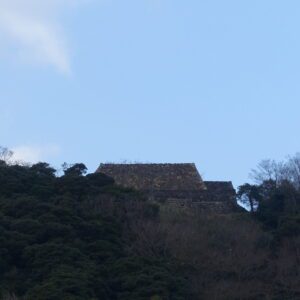
I wanted to climb to the castle tower ruins, but I gave up because the road to the castle tower ruins was muddy and very slippery after the snow melted. It’s about a 15-minute walk to the castle tower ruins, so the next time I come to Yonago, I’d like to climb up to the castle tower ruins and see the magnificent view.

I went to Kamo Shrine Tenmangu, which is about a 5-minute walk from the Yonago Castle Ruins. Kamo Shrine Tenmangu is a shrine that originated in the place named Yonago. There is a tradition that it was called Yonago because it was washing rice at a well in the precincts of Kamo Shrine Tenmangu. In the olden days, it seems that the word “washing rice” was called “yonagu”. Kamo Shrine Tenmangu Shrine is not clear when it was built, but it is the oldest shrine in Yonago and has been deeply revered by successive Yonago castle owners as a shrine to protect Yonago castle.
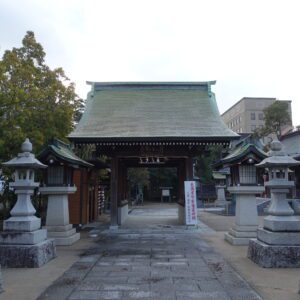
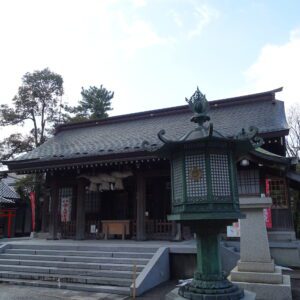
I went to the Goto family residence, a shipping wholesaler, which is about a 10-minute walk from Kamo Shrine Tenmangu. The Goto family residence is a national important cultural property. The inside of the building is not open to the public.

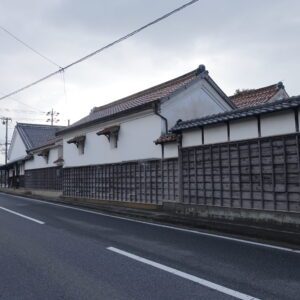
White-walled storehouses are lined up along the former Kamo River, where the Goto family residence is located. It is a remnant of the water transportation of rice etc. in Yonago, which prospered as the largest commercial city in the Sanin region. It was a pleasant place to take a walk along the former Kamo River.
Since there is a legend that Kappa lived in the former Kamo River during the Edo period, there is also a statue of Shigeru Mizuki’s manga “Kappa no Sanpei”.
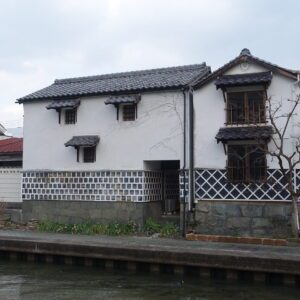
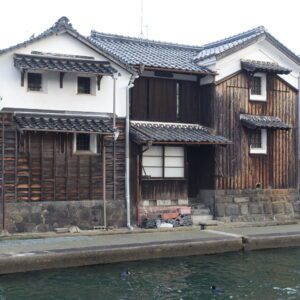

The former Yonago City Hall is about a 5-minute walk from the former Kamo River. Built in 1930. The designer is Koichi Sato, who also designed the Okuma Auditorium at Waseda University. It is a tangible cultural property of Yonago City. Today, the “Sanin History Museum” exhibits Yonago folk materials and Yonago Castle materials.
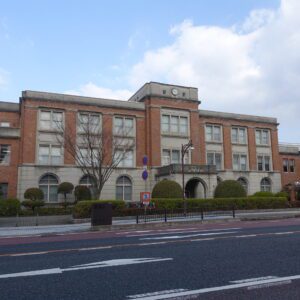
2. Yakumo Honjin
After finishing the sightseeing in Yonago city, I moved from Yonago station to Shinji station by JR and went to Yakumo Honjin (Kowake family residence). The JR I used is as follows.
Depart Yonago Station at 10:16, Limited Express Yakumo No. 3, arrive at Shinji Station at 10:51, fare Yen 2,150
Limited express Yakumo is nostalgic with the painting like the limited express of the old Japanese National Railways. I ate ekiben in the limited express Yakumo car.
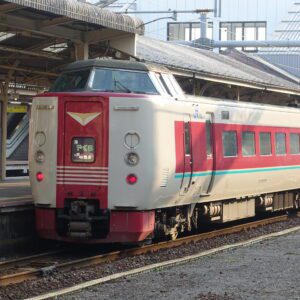
Yakumo Honjin (Kowake family residence) is located in Shinjicho, which prospered as a post town, and was rebuilt in 1733. It is a 5-minute walk from Shinji Station.
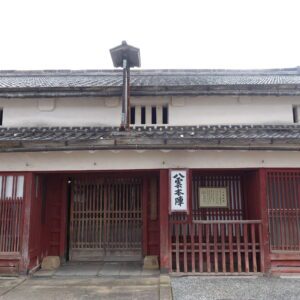
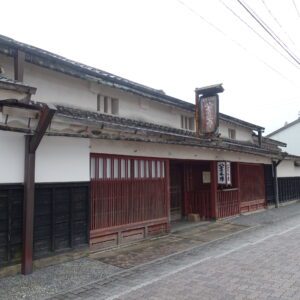
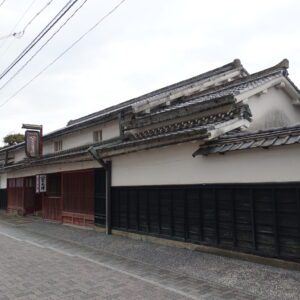
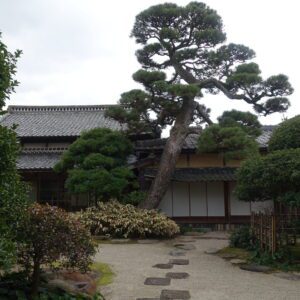
Yakumo Honjin consists of a vast building and garden with more than 40 rooms on a site of about 4,000 square meters. Many guests such as the Matsue feudal lord, Emperor Taisho, and Emperor Showa visited. Heihachiro Togo accompanied Emperor Taisho (then Crown Prince Yoshihito) Sanin visits in 1907. At Yakumo Honjin, there are teble and chair where Prince Yoshihito had lunch. In addition, the frame of “Kei-Un-hi” that Heihachiro Togo wrote remains.
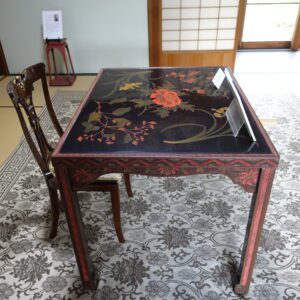
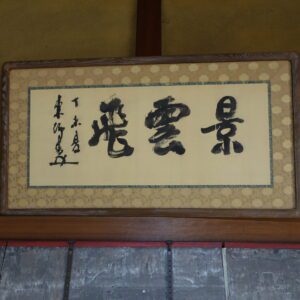
Yakumo Honjin is a national important cultural property. The inside of Yakumo Honjin was very impressive. In each room, wonderful arts and crafts such as hanging scrolls, folding screens and tea utensils from the Kowake family are exhibited. It was worth the visit just to look at those crafts. Yakumo Honjin was one of the best buildings of important cultural properties in the country I visited. There were no other tourists at the time of my visit. I would like many people to visit.

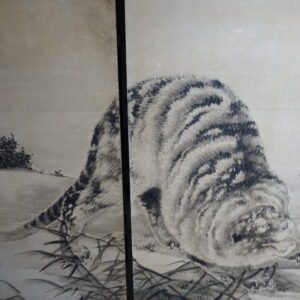

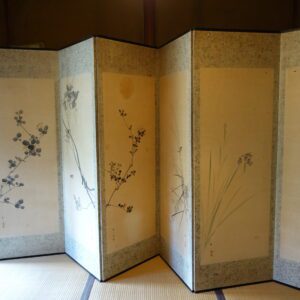
Admission: Yen 500
3. Kamosu Shrine
I went to Kamosu Shrine from Yakumo Honjin by public transportation. The public transportation I used is as follows.
Depart Shinji Station at 11:58, Rapid Aqua Liner “bound for Yonago”, arrive at Matsue Station at 12:18
Depart Matsue Station at 12:30, Yakumo Line “bound for Yakumo garage”, arrive at Coop Ichihata entrance at 12:47, total fare Yen 650
Kamosu Shrine is about a 10-minute walk from the Corp Ichihata entrance bus stop.
The main shrine of Kamosu Shrine is the oldest Taisha-zukuri in Japan and is a national treasure. The structure of Taisha-zukuri is digging pillar, gabled structure, and Tsumairi. It was built after the middle of the Heian period (794-1185), and the current shrine was rebuilt in 1583.
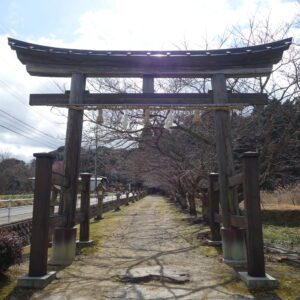
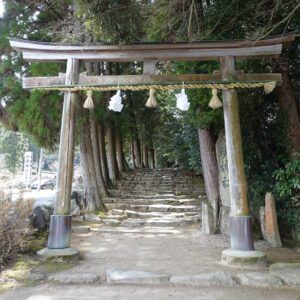
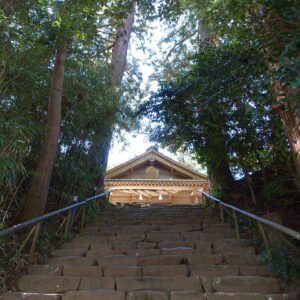
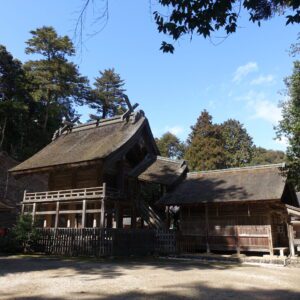
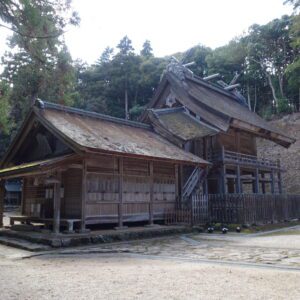
The main shrine of Kifune Inari Shrine, which is the subsidiary shrines of Kamosu Shrine, is a national important cultural property.
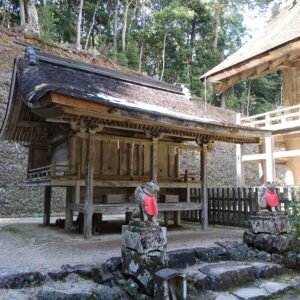
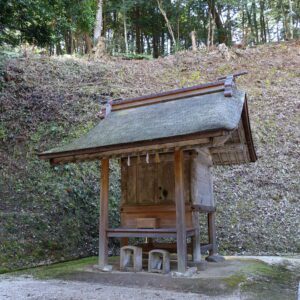
The precincts had a very mysterious atmosphere with a dignified and commanding atmosphere. I felt some spiritual energy. It is a popular shrine as a place with spiritual energy. The main shrine of Izumo Taisha, a national treasure, is overwhelmingly famous in Shimane Prefecture, but the same national treasure, Kamosu Shrine, is close to Matsue Station, so I definitely want many people to visit it. At Kamosu Shrine, there were no worshipers other than me.
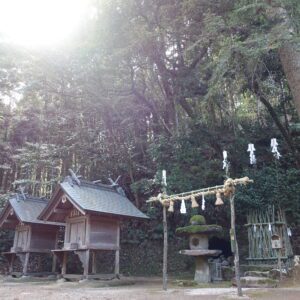
4. Matsue Castle
I went to Matsue Castle by bus from Kamosu Shrine. The buses I used are as follows.
Depart Fudoki-no-oka entrance at 13:29, Yakumo line “bound for Shinjiko Onsen station”, arrive at national treasure Matsue Castle prefectural office at 13:55, fare Yen 340
It takes about 10 minutes on foot from Kamosu Shrine to the bus stop at the Fudoki-no-oka entrance. It is very convenient to be able to go from Kamosu Shrine to Matsue Castle, two national treasures in Shimane prefecture, without changing bus.
Matsue Castle is one of the existing castle towers with only 12 castles remaining nationwide. There are only five national treasures: Matsue Castle, Himeji Castle, Hikone Castle, Matsumoto Castle, and Inuyama Castle of the 12 existing castle towers.
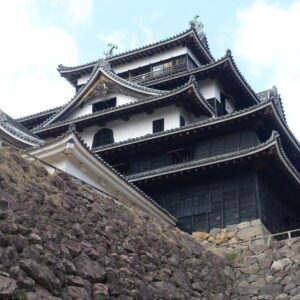
Matsue Castle is a castle with a very cool castle tower based on black color. In my opinion, Himeji Castle is the most beautiful castle in white color, and Matsue Castle is the most beautiful castle in black color.

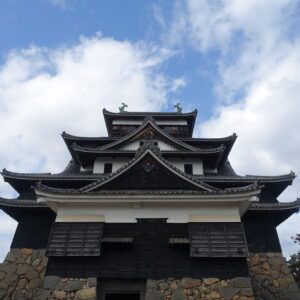
Castle tower admission: Adults Yen 680, elementary and junior high school students Yen 290, foreigners (adults) Yen 470, foreigners (elementary and junior high school students) Yen 200
Tickets common to all 3 buildings: Adults Yen 1,100, elementary and junior high school students Yen 510
You can enter the Matsue Castle castle tower, Koizumi Yakumo Memorial Hall, and Samurai Residence with a ticket common to all three buildings.
Tickets common to 2 buildings: Adults Yen 950, elementary and junior high school students Yen 430
You can enter the Matsue Castle castle tower and the Matsue History Museum with a ticket common to 2 buildings.
There are Matsue Shrine and Kounkaku around Matsue Castle.
Matsue Shrine enshrines the first lord of the Matsue clan, Naomasa Matsudaira, Ieyasu Tokugawa, the 7th lord of the Matsue clan, Harusato Matsudaira, and Yoshiharu Horio, the founder of Matsue clan.
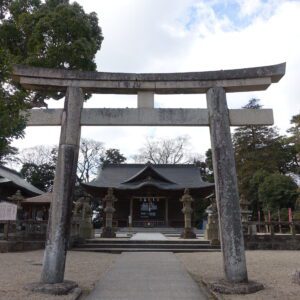
Kounkaku was built in 1903. Initially, it was built for the Emperor Meiji to stay, but it didn’t happen. However, it became an accommodation when Prince Yoshihito (later Emperor Taisho) Sanin visits in 1907. Kounkaku is a tangible cultural property of Shimane Prefecture.

5. Jozan Inari Shrine
Jozan Inari Shrine is located on the grounds of Matsue Castle. Horan-Enya, which is held once every 10 years, is Shikinen Shinkousai Festival of Jozan Inari Shrine. “Shinkousai Festival” means that God goes to another place. In the case of Horan-Enya, the god who left Shiroyama Inari Shrine goes to Adakaya Shrine (Togyosai : Transfer Festival) and returns to Jozan Inari Shrine eight days later (Kangyosai : Return Festival). The next Horan-Enya is scheduled for 2029.

There are hundreds of stone foxes at Jozan Inari Shrine. This was my second visit. Personally, I felt it was a very mysterious shrine this time as well as last time.
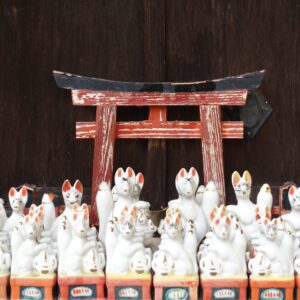
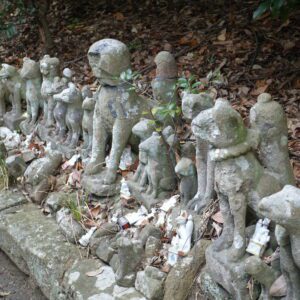

6. Karakoro Art Studio
Karakoro Art Studio is a craft museum and commercial facility that was reopened in 2000 by renewing the former Matsue branch of the Bank of Japan. The former Matsue branch of the Bank of Japan was built in 1938 and is a national tangible cultural property. It is about a 15-minute walk from Jozan Inari Shrine.
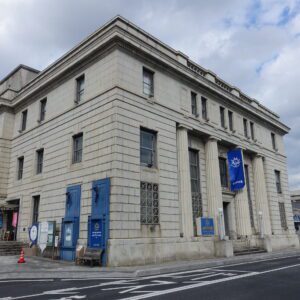

The large door of the vault is left in the basement of Karakoro Art Studio. I was surprised at the thickness of the door.
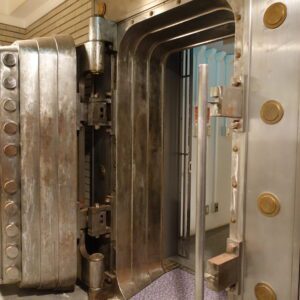
There is a pink mailbox in the courtyard of Karakoro Art Studio. Originally it was a mailbox in front of Kounkaku, but it turned pink and moved to Karakoro Art Studio. It is a post that invites good luck by playing “Koun” of Kounkaku and “luck”. “Luck” is called “Koun” in Japanese.
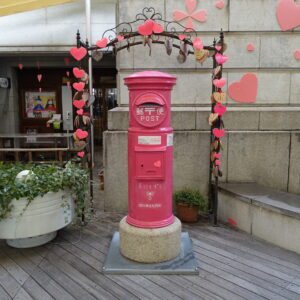
Next to the pink mailbox, there is a “fountain of wishes”.
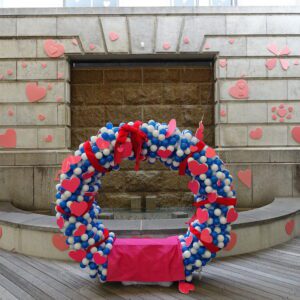
Since there are many historical shrines in Shimane Prefecture, the Shimane Tourism Bureau has been promoting the matchmaking brand as a “Holy Land of matchmaking.” It has been rebranded as “& Holy Land of go-en (deep relationship)” in 2022.
7. Yuushien
I walked from Karakoro Art Studio to Matsue Station, ate Izumo soba, and then went to Yuushien by bus. It takes about 20 minutes on foot from Karakoro Art Studio to Matsue Station. It takes about 10 minutes by bus.
Depart Matsue Station at 16:25, Matsue Municipal Bus “bound for Yatsukacho / Yuushien entrance”, arrival at Yatsukacho / Yuushien entrance at 17:15, fare Yen 700
It is less than 5 minutes on foot from the Yatsuka-cho / Yuushien entrance bus stop to Yuushien.

Yuushien is a Japanese garden with a pond in the centre on Daikon Island in Nakaumi. It opened in 1975. Daikonjima is an island formed by the explosion of a submarine volcano in the Nakaumi, and the soil is rich in nutrients such as minerals. The soil rich in nutrients is ideal for peony cultivation, and peony cultivation, which started about 300 years ago, now accounts for more than 80% of Japan’s total production and is also exported overseas.
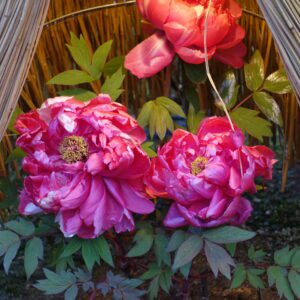
Originally, the best time to see peony is from late April to mid-May, but there is a peony hall where you can appreciate peony in full bloom all year round by adjusting the temperature and humidity. You can also see the “Kan-botan (peony in winter)” variety that blooms outdoors even in winter.
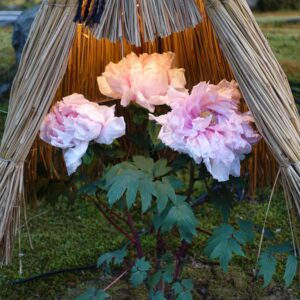
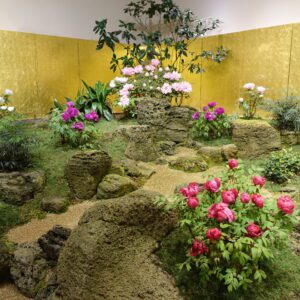
Yuushien was a very beautiful Japanese garden. It takes about 30 minutes to go around slowly. I thought it was a nice garden where I could feel calm.

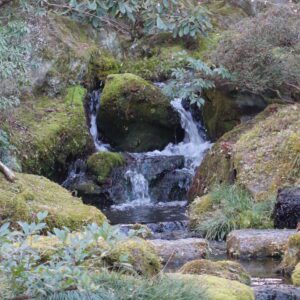
Since I went to Yuushien in the evening, I could see the illuminated garden. The illuminated garden was very beautiful and crowded with many people.
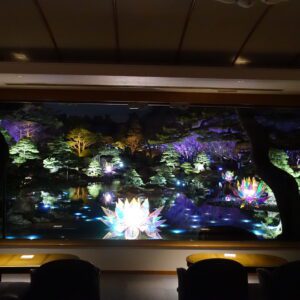
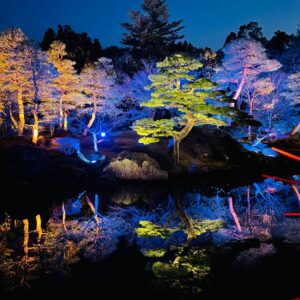

Peony collaboration with the flower arrangement artist Shogo Kariyazaki was also held. The work with the theme of Hanafuda (Japanese playing cards) was wonderful.
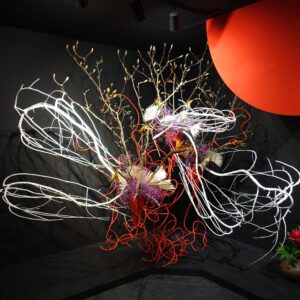
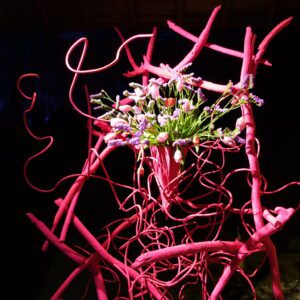
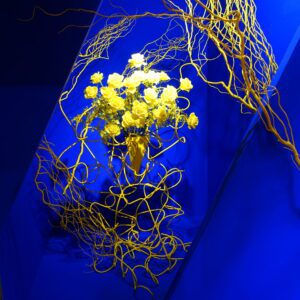
Admission: Yen 1,000 for adults, Yen 500 for elementary, junior high and high school students
8. Yonago Kitaro Airport
After enjoying Yuushien, I took a taxi to Yonago Kitaro Airport. The taxi fare was about Yen 3,500. The problem with Yuushien is that there is no public transportation to Yonago Kitaro Airport. On the other hand, the last bus bound for Matsue Station departs from Yatsukacho / Yuushien entrance at 18:50, so in winter you can manage to get to Matsue Station after enjoying the illumination.
Yonago Kitaro Airport has many Kitaro objects as the name suggests. It was fun just looking at the Kitaro objects.
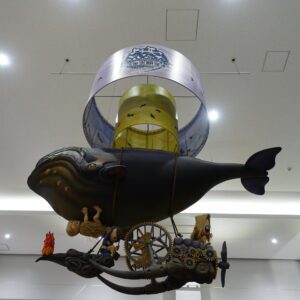
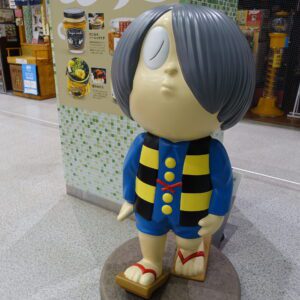
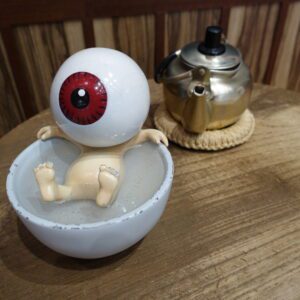
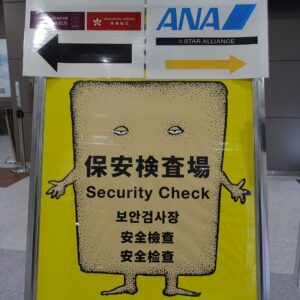
The planes I used from Yonago Kitaro Airport to Haneda Airport are as follows.
Depart Yonago Kitaro Airport at 20:55, ANA390, arrive at Haneda Airport at 22:15
I was able to visit many tourist destinations such as national treasures, national important cultural properties, and Important Preservation Districts for Groups of Traditional Buildings by this trip to Hyogo, Tottori, and Shimane (4 nights and 5 days) . In addition, I was able to enjoy exquisite gourmet food such as “botan nabe (wild boar meat cooked in a pot)” and live snow crab, and it was a very satisfying trip.
Note: The departure / arrival times, fares of transportation, admission fees, meal fees, etc. listed in the text are as of the time of writing the BLOG. Please check for yourself when you go on a trip as it may change in the future.
